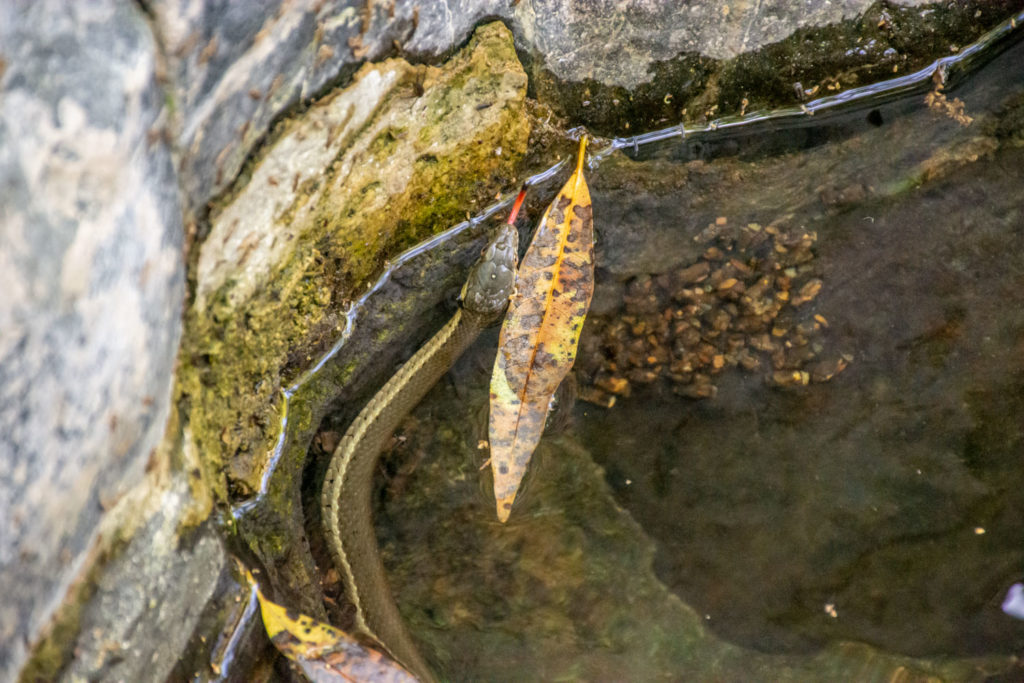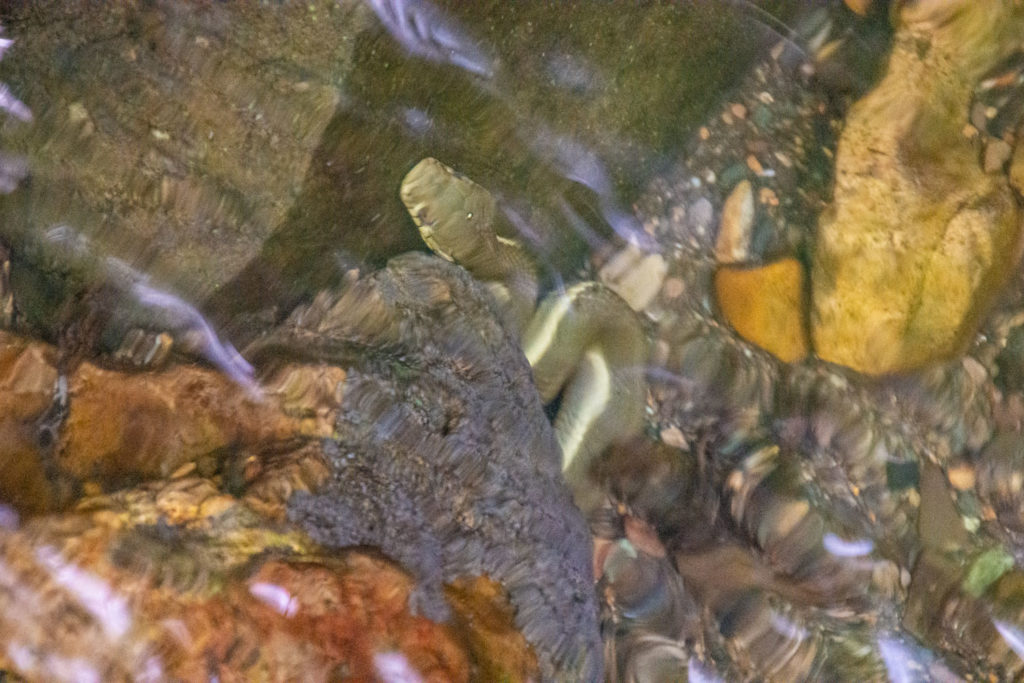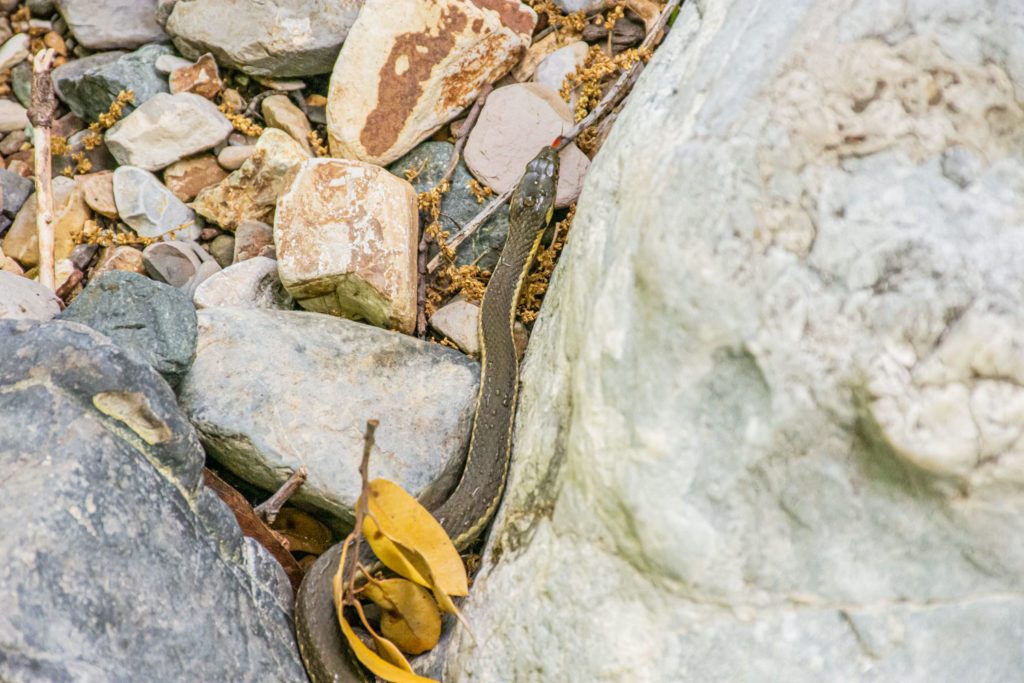Thamnophis hammondii
- Sensitive – U.S. Forest Service
- Sensitive – Bureau of Land Management
- Species of Special Concern – California Department of Fish and Wildlife

More than two dozen types of snakes slither through parts of the Los Padres National Forest, including coachwhips, racers, kingsnakes, nightsnakes, gopher snakes, garter snakes, and yes…rattlesnakes. Garter snakes are the most common snakes in North America and are found throughout our region, but one type of garter snake in the Los Padres National Forest—the two-striped garter snake—is classified as a “Sensitive Species” by the U.S. Forest Service. The Los Padres National Forest is at the center of this snake’s range, which extends from northern Monterey County to Baja California.
The two-striped garter snake measures two to three feet long with an olive, brown, or dark gray color. Most garter snakes have a stripe running along the tops of their backs, but two-striped garter snakes do not have this vertebral stripe. Instead, as their name implies, two-striped garter snakes have a yellow stripe on each side of their bodies (or sometimes no stripe at all).
This primarily aquatic snake inhabits streams and ponds in chaparral, oak woodland, and forest habitats up to 8,000 feet elevation. Its ideal habitat is in aquatic areas that are bordered by riparian vegetation with open spaces for basking. While the two-striped garter snake is nonvenomous, its saliva contains a toxin that it uses to capture prey. Their diet consists of fish, fish eggs, and tadpoles.

Garter snakes have complex systems of peromonal communication. They can find other snakes by following their pheromone-scented trails, and male and female scents are so different that they are immediately distinguishable. However, male garter snakes sometimes produce both male and female pheromones, fooling other males into attempting to mate with them. This helps the male snakes warm up and become active immediately after hibernation.
Threats
Two-striped garter snakes have disappeared from more than forty percent of their historic range, primarily because the snakes’ aquatic and riparian habitat is disappearing. Factors leading to the decline of this species include habitat conversion and degradation resulting from urbanization, construction of reservoirs, cement-lining of stream channels, livestock grazing, predation by introduced fish and bullfrogs, and depletion of prey base. In addition, the Forest Service states that increased recreational use on national forest lands has increased the amount of disturbance and mortality of the snake.
Conservation
The two-striped garter snake has disappeared from many historic locations in the coastal basins. Much of the remaining populations in our region occur in our adjacent to the Los Padres National Forest, so it is important to protect riparian vegetation and upland basking sites in the forest so that the species can continue to survive.

According to the U.S. Forest Service, surveys are needed throughout the Los Padres National Forest so that land managers can better understand where two-striped garter snakes occur and can monitor their populations over time. Because of this, the U.S. Forest Service has classified the two-striped garter snake as a “Sensitive Species,” and the California Department of Fish & Wildlife has classified it as a “Species of Special Concern.” Additionally, the Bureau of Land Management lists the two-striped garter snake as a “Sensitive Species.”
ForestWatch staff recently documented two specimens in and around a tributary in Davy Brown Creek in an area known as Fir Canyon near Figueroa Mountain. One of the snakes was observed within the stream itself while the other was basking on a rock approximately 300 feet away from the water.
ForestWatch works to protect streams and associated riparian habitat throughout the Los Padres National Forest, protecting the places that two-striped garter snakes need to survive. We are also encouraging the Forest Service to undertake a comprehensive survey of riparian areas throughout the forest so that we have a better understanding of where the snakes occur and how we can best protect their habitat.






